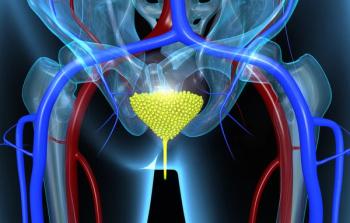
Metabolomic Analysis May Provide Non-Invasive Bladder Cancer Surveillance
A new study identified several metabolites and metabolic indicators as potential biomarkers for recurrence risk in non–muscle-invasive bladder cancer.
A new study identified several metabolites and metabolic indicators as potential biomarkers for recurrence risk in non–muscle-invasive bladder cancer (NMIBC). A pilot analysis suggests that using metabolic biomarkers for monitoring after transurethral resection of the bladder tumor (TURBT) may be feasible.
“NMIBC in the two early stages…represents 70% to 80% of the diagnosed cases and, although it is not life-threatening, it has the highest recurrence rate within tumors (up to 70% in 5 years), requiring a lifelong monitoring of the patient after TURBT, by means of cystoscopy and urinary cytology,” wrote study authors led by José Luis Ruiz-Cerdá, MD, of the Universitat Politècnica de València in Spain. Both those types of tests, they wrote, have drawbacks including lack of sensitivity and specificity, as well as high cost.
A metabolomic approach utilizing urinary testing could offer prognostic value and help avoid some of those drawbacks. The investigators analyzed metabolomic profiles of 316 urine samples collected from 31 patients with NMIBC at baseline and at various points following TURBT and during the subsequent surveillance period. The results were
By comparing the values of more than 100 metabolite variables from before and after treatment and during surveillance, they developed a risk model. After adjustment for prior probability of recurrence per risk grouping, the negative predictive values were 96.5%, 94.0%, 92.9%, and 76.1%, respectively, for the low-, low-intermediate-, high-intermediate-, and high-risk groups.
They also found that several metabolic pathways were significantly altered before and after TURBT. These included phenylalanine, arginine, proline, and tryptophan pathways (P < .05 for all). They also found higher levels of pyroglutamic acid and lower levels of hippuric acid before TURBT, along with several other metabolic changes.
The researchers also conducted a small retrospective analysis of longitudinal trajectories of six NMIBC patients with multiple episodes of bladder cancer recurrence. They found that in at least two patients, there was a gradual shift of the metabolic profile in a direction that would indicate bladder cancer, rather than a “control” state.
“Taken together, the results of the present study give support to the hypothesis of the existence of a urinary metabolic profile associated with the occurrence of NMIBC tumor,” the authors wrote. “These results provide a strong basis for the use of a metabolomic-based biomarker analysis as a non-invasive monitoring system to detect NMIBC recurrence at an early stage and eventually adjust therapies according to NMIBC risk.”
Newsletter
Stay up to date on recent advances in the multidisciplinary approach to cancer.


















































































